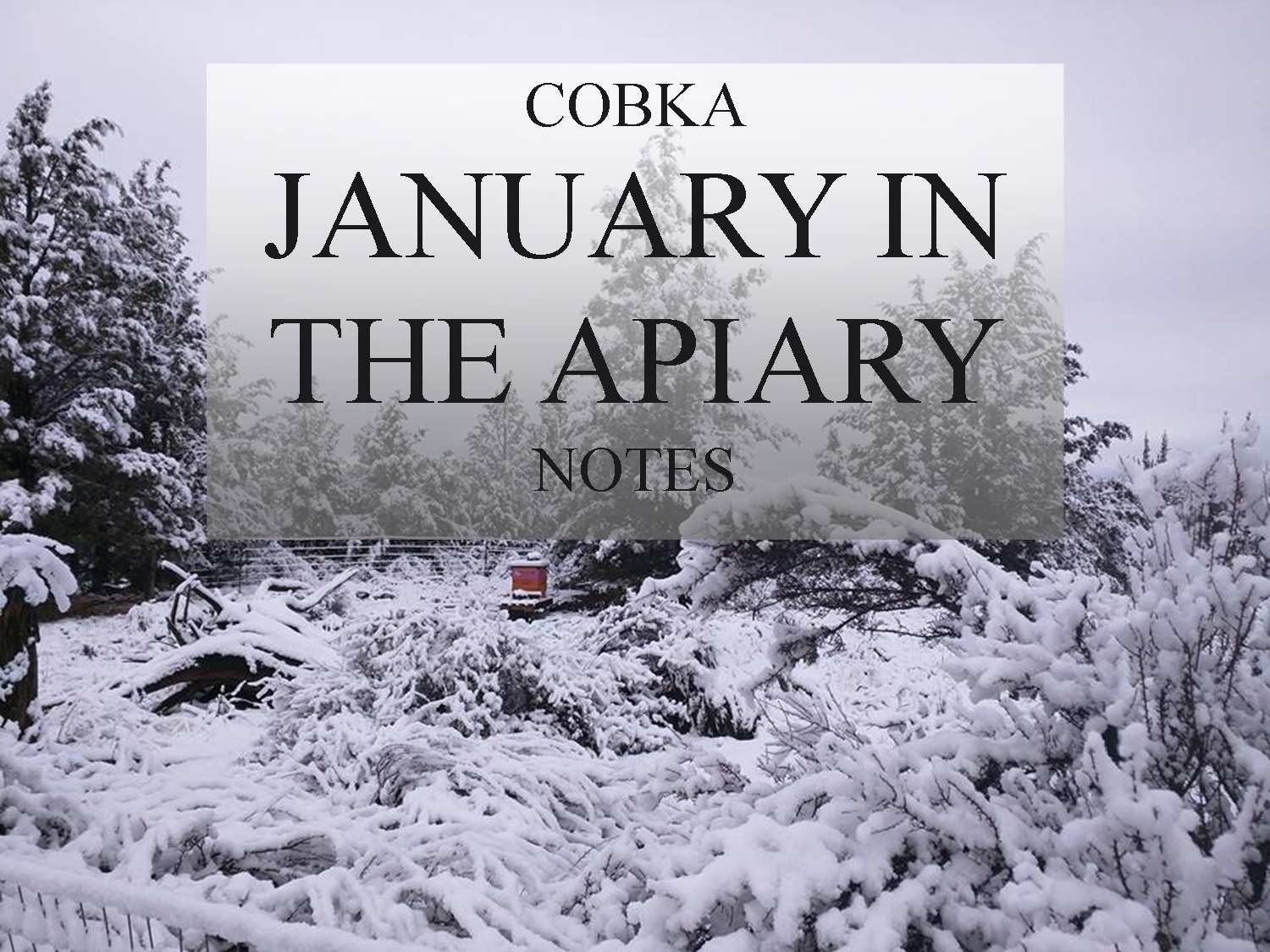|

![]()
![]()
![]()
![]()
![]()
![]()
![]()
Aaaah. Winter is really here. We’re sitting in front of the fire, with the warm comforter and hot tea.
Your bees, however, are bundled up in their cluster. They’re keeping the queen warm and the worker at a moderate temp. This is all said because, with a very few exceptions, THEY HAVE IT ALL UNDER CONTROL. You don’t really need to do much of anything.
You prepped your hives in the Fall: made sure they had enough food, a viable and vigorous queen, diseases and pests reasonably under control, hive tilted a bit forward, perhaps wrapped and insulated, provided with ventilation, protected from wind, and a rock on the cover or some strapping contraption you’re quite proud of. The bees sealed all the cracks, moved the food to where they wanted it and gathered in their cluster. Bottom line is anything we do now should be very carefully considered, non-intrusive and with a definite problem to fix. If they’re dead, they’re dead, independent of anything we do.
Every 3 or 4 weeks, heft the back side of each hive and estimate hive weight to make sure there’s still enough food (if absolutely necessary, feed fondant or dry sugar). Make sure the cover stays on. Within a few days after a big storm, consider checking to see that at least 1 of the ventilation openings is free of snow.
Now for the fun part. As Matt pointed out in December, you could’ve started looking at catalogues, books and web sites to contemplate changes or enhancements for next year. Now is the time to make specific plans and get them going. Do you want to keep the same number of hives, or increase or decrease? How will you handle winter losses? Which vendors will you use for bees this year? Have you confirmed ordering requirements and dates? Will you be moving any of your hives/bee yards? Will you try different pest and disease control methods? Will you try raising your own queens, or splitting colonies for increases or extra income? If you’re replacing woodenware, or increasing, choose the vendor and style to order. If you order now, receiving mid-January (cheaper slow boat shipping). You can easily get it all put together and finished well before the spring activities instead of adding more to your already full Spring bee housekeeping “plate”. If you’re planning to plant a pollinator garden, January is when you need to get the seed order in. Even if you’re completely happy with how last year went…take time to contemplate (over that cup of hot chocolate) your plans for a great new year of beekeeping.
Happy New Year!!